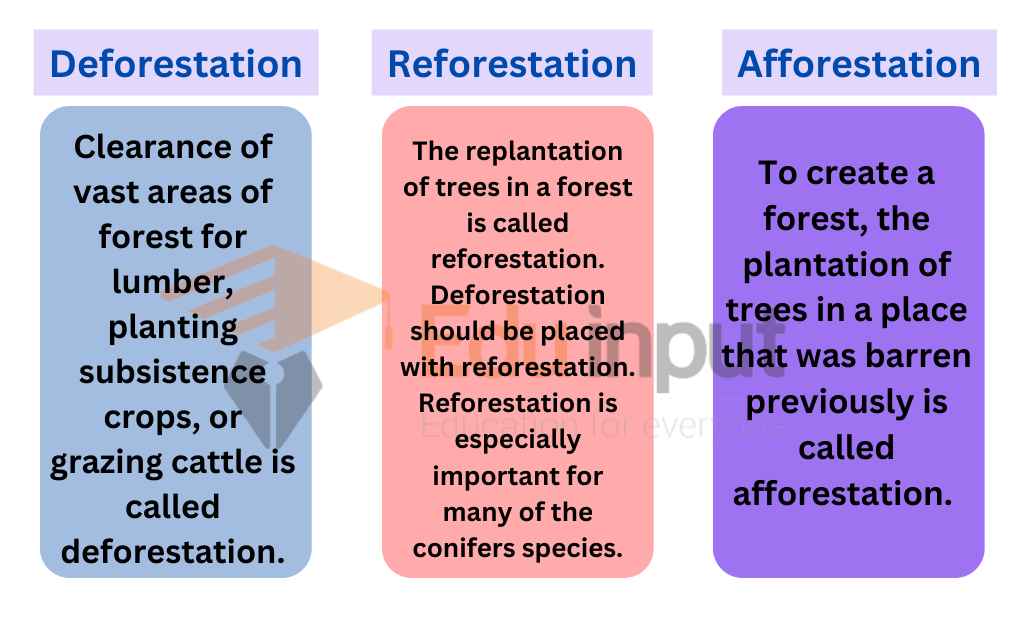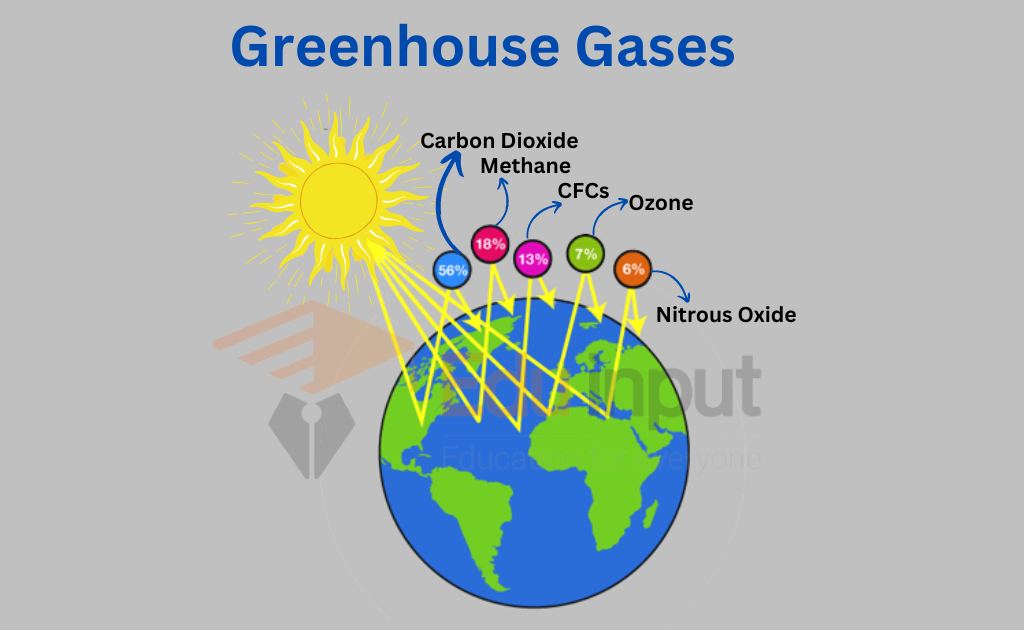Difference Between Deforestation, Reforestation, and Afforestation
Clearance of vast areas of forest for lumber, planting subsistence crops, or grazing cattle is called deforestation.
What is Deforestation?
Deforestation refers to the removal or destruction of trees from forests. This causes a reduction in forest area and leads to changes in the ecosystem. The consequences include loss of biodiversity, increased carbon dioxide emissions, soil erosion, water pollution, and climate change.
Effects Of Deforestation
There are the following effects of deforestation:
Soil erosion: Developing countries like Pakistan are facing the problem of population explosion. These rapid increases in population growth increase requirements for food and shelter. Therefore, man is cutting trees for agriculture and wood used in houses. If the forests are continuously cut down at that rate, there will be no leaf canopy left.
This leaf canopy protects the soil from driving rays. Consequently, some of the soil will run away with water and reach into the stream and river. This soil will be wasted. This the fertility of the soil will be reduced.
Barren soil: The destruction of forests makes the oil barren.
Environmental pollution: We are facing the problem of environmental pollution now a day. Trees plantation makes the environment neat and clean. Many human effects on natural carbon sinks activities have detrimental
Overharvesting: Harvesting has exceeded the rates of replacement. Thus the forests of temperate and tropic biomes have greatly reduced. This reduction has decreased the number of living trees. The trees remove carbon as CO2 from the atmosphere through photosynthesis. Their growth stored this carbon as wood for a long period.

Reforestation
The replantation of trees in a forest is called reforestation. Deforestation should be placed with reforestation. Reforestation is especially important for many of the conifers species. Conifers species require bare soil.
In clear cuing methods all of the trees in a large area are removed. Re-sprouting from sprout stumps or seed germination must be protected for reforestation in these areas. Reforestation means planting trees in areas where they weren’t previously present. This helps prevent soil erosion, improve air quality, reduce greenhouse gas emissions, and provide habitat for wildlife.
Afforestation
The establishment of new forests where no forests existed previously is called afforestation. Afforestation is the establishment of a forest or stands of trees in an area where there was no previous tree cover. By definition, afforestation is the creation of a forest, and therefore the planting of trees is a crucial part of the process.
Afforestation is an increasingly sought-after method to fight climate concerns, as it is known to increase the soil quality and organic carbon levels into the soil, avoiding desertification. Many government and non-governmental organizations directly engage in afforestation programs to create forests and increase carbon capture.
Related FAQs
What is Deforestation?
Clearance of vast areas of forest for lumber, planting subsistence crops, or grazing cattle is called deforestation.
What is Reforestation?
The replantation of trees in a forest that has been destroyed due to natural interruption like draught is called reforestation.
What is Aforestation?
To create a forest, the plantation of trees in a place that was barren previously is called afforestation.





Leave a Reply